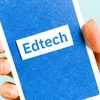IoT: To extend learning beyond classrooms
IoT-enabled devices are transforming the digital learning landscape by making lessons more engaging and interactive and allowing various stakeholders to perform their tasks at their convenience.
IoT turns classrooms into smarter learning environments by connecting the classroom devices with cloud and apps, redefining the ways of interaction among students, teachers, and administrators, measuring the educational outcomes, and providing ways to improve them at a reduced cost.
With the proliferation of advanced sensors and connected devices, IoT in education brings the capabilities of a blended learning environment, a method that combines the best of in-person and remote teaching with digital devices to everyone.
IoT eliminates the limitation of physical presence by expanding access through the internet. In education, it brings a new paradigm by connecting people, digitizing and simplifying their ways of teaching, and making learning accessible from anywhere, anytime, and on any device.
Changes in classrooms with IoT devices
Build creativity and engagement
Smart and interactive whiteboards make learning interesting with student-engagement tools like quizzes, polls, etc. It optimises the method of instruction and improves learning outcomes.
The instructors get the flexibility to access the content anytime, anywhere, and on any device. Using different forms of content like videos, images, and texts, teachers create beautiful and engaging lessons, which they can share before, during, or after class with the students.
For every published lesson, students receive a push notification which helps them to access the resources as and when they want. Students can contribute and collaborate with their peers and teachers for any project.
Self-learning
The self-learning apps assist students with independent educational resources, in different forms of content – videos, texts, and images that encourage them to learn from home, especially when they can’t continue their classes due to school closures.
The IoT devices in the smart classroom help teachers to record the teaching video and share it with students, to learn from home or anywhere. Sharing the resources before the class, enables teachers to utilise class time to discuss problems, work on ideas, and encourage group collaboration. The independent educational resources eliminate the dependency on supplementary or extra classes.
Right information to right person
As the classroom teaching devices connected to the internet are rapidly evolving, it is becoming intelligent, giving useful interpretations and offering contextually-rich solutions, rather than just capturing the data. Students are offered a personalised content recommendation on the basis of their strong and weak areas.
The IoT devices in the classroom capture attentiveness, interest, happiness, IQ level, and analyse it in different interfaces like eye-blink, sitting posture, speech, gesture, etc. The teaching effectiveness in online and face-to-face classes can be determined. As the data gets stored on the cloud, tracking it becomes possible at every step, irrespective of the student’s presence in a face-to-face classroom or remote session.
For instance, if a student needs help in a particular subject, the teacher concerned will get notified about it and offer more attention in the class and offer personalised content.
Assistive environment
The intelligent sensors fitted in the classroom devices are capable of sensing the environment, human gestures, their actions and voice, and even temperature that help them to respond quickly to the environment.
To maintain the social distancing at schools, the AI-cameras deployed in the classroom sense the distance between the students and share the report with the management to take decisions accordingly.
They also capture the facial expressions of students and record their attentiveness in different subjects, their sitting posture, their different states of mind, and prepare a profile for each student.
Connects the stakeholders
The cloud connected devices with app-based access allows the multiple stakeholders to perform their tasks at their convenience. The learners watch the videos of the subjects they study at home or in the classroom for a better explanation, and teachers use the class time to clear doubts, discuss problems, and encourage group collaboration.
The administrator of the institution who always struggles to know the effectiveness of the class and teacher’s efficiency to stay on schedule, gets to know about everything in the form of a report and parents receive a push notification and remain informed about their pupil’s performance, attendance, and marks obtained.
Eliminate the limitation of physical presence
At some places, where access to learning is limited by economic status, the numbers of schools are limited, learning resources are outdated, and teachers are never sufficient for every subject, IoT devices remove the constraint of time and location and make education available for one and all. It allows the students to join the class from anywhere.
IoT helps educational institutions to unlock the full benefits by providing enhanced levels of teaching and learning environment, automation and high-level data security. Every institution is turning towards technology to offer uninterrupted education in a smart learning environment, without making much investment.
(Disclaimer: The views and opinions expressed in this article are those of the author and do not necessarily reflect the views of YourStory.)









